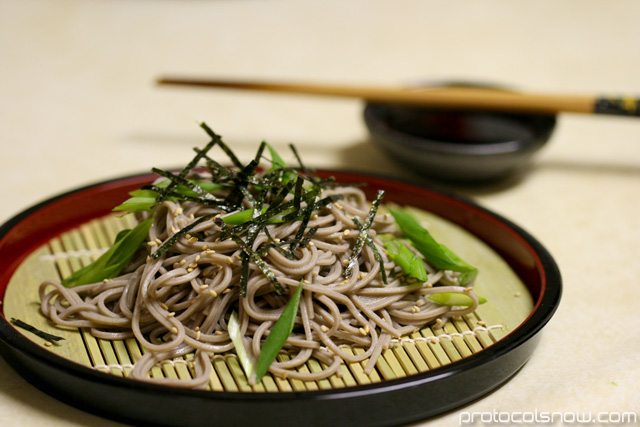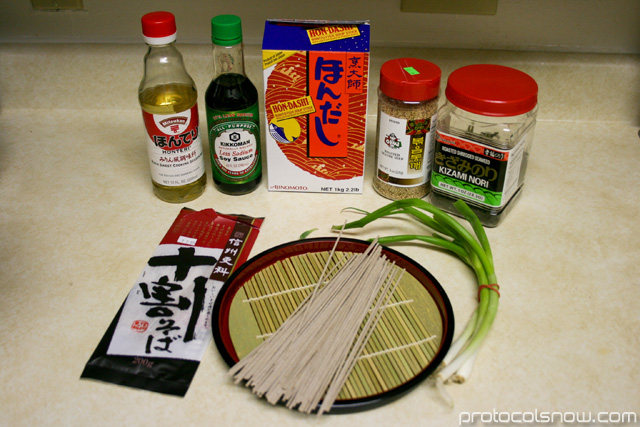Buckwheat soba noodles
As any busy student knows, leisurely time allocated for eating is often a luxury. Eating cheap, healthy, and fast is the elusive trinity. Many students have their own favorite go-to meals, and for me, noodles usually is part of the answer.
I formerly wasn’t very fond of Japanese cold soba noodles because I prefer my meals to be hot, but in the last few years I’ve become much more adventurous in my eating habits. This is a very simple dish to make that tastes great and is easy to modify for variety.

When buying soba noodles, you should try to look for packages that have “buckwheat flour” as the first ingredient on the nutrition label. These noodles are the most healthy but are more difficult to find from my experience (a bit more expensive, too). Hopefully your local Japanese market carries this, but chances are that the packages will have “wheat flour” as the main ingredient. No worries.

Making this dish is incredibly simple, especially if you make a large batch of the dipping sauce ahead of time and use it for multiple meals. Once you have the sauce, all you really have to do at mealtime is boil and rinse the noodles. You can prepare the garnishes while boiling, so the total prep time can be as little as 10 minutes.
Ingredients:
Buckwheat soba noodles
4 tbsp Soy sauce
4 tbsp Mirin
1/2 tsp Sugar
1/2 cup Dashi stock (if you don’t have this, some people use chicken/vegetable stock)
Green onions
Toasted sesame seeds
Dried seaweed slivers
1) To make the dipping sauce, mix the soy sauce, mirin, sugar, and Dashi stock. Bring the mixture to a boil, simmer for a minute, then set aside to cool down. I only very lightly dip the noodles when I eat, so the listed quantities above can last me several meals. I wouldn’t recommend storing the sauce in the refrigerator for longer than a week though, as the Dashi stock decreases its keeping quality.
2) Boil buckwheat soba noodles according to instructions on package. There’s no need to salt the water. Once boiled, drain the noodles and wash them with cold water to get rid of starchy residue. Keep on rinsing the noodles until the water runs clear, then set on plate.
3) For garnishes, I like using sliced green onions, toasted sesame seeds, and seaweed slivers, but you can use whatever you want. Sprinkle them over the noodles.
4) That’s it! Cold soba is traditionally served with a dipping sauce on the side, but sometimes I’m lazy and pour the sauce directly over the noodles.
